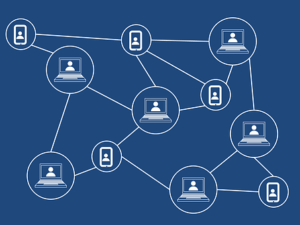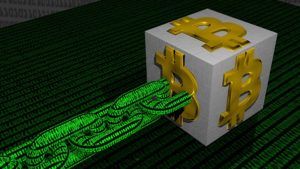
Blockchain technology is slowly entering into public discourse. You are now more likely to come across a couple of articles on the nascent technology as you travel through the internet. Like every technology, blockchain comes with its own unique terms. Here are a few definitions to guide you through.
Blockchain
Bitcoin has taken the world by storm since 2017. It is the pioneer cryptocurrency created by the pseudonymous Satoshi Nakamoto in 2009. It remains the most valuable and by far the most coveted virtual currency to date. But did you know that bitcoin is actually powered by the blockchain technology?

Blockchain is basically a type of distributed ledger much like the one we use to keep a record of transactions in say a small shop. The difference is that a distributed ledger exists digitally in several computers spread across the world.
Each computer has a copy of the ledger and every transaction is verified by comparing these copies. One major characteristic of blockchain is their immutability. This means you cannot alter a transaction once it is entered into the “block.”
For this reason, it is called an append only ledger. Each new transaction is added in a chronological order and the trail can clearly be seen, at least in public blockchains. You can see blockchain as an accounting method.
While it is primarily used to keep track of digital currency transactions, practically any document including pictures can be coded into the blockchain. A record cannot be deleted or altered once entered as the authenticity of the record is easily verified by the community.
Block
A block contains all or part of transactions. A block once completed is entered into a blockchain as a permanent database and a new one is generated. Every block is linked to a previous one through complex algorithms, like a chain. Hence blockchain.
Distributed Ledger
The term distributed ledger has become almost synonymous with blockchain. In many aspects, this relation is true but not accurate.

Simply put, blockchain is just one form of a distributed ledger. You can view distributed ledger as a database. Except that it is distributed. Most of the databases we currently use are centralised. This means that they are operated from a central place.
A distributed ledger is however stored in many places, in this case using computers. One major feature is that they are not controlled by any one person or authority. For this reason, distributed ledgers have been lauded as revolutionary.
They can for example be used to build systems that are immune to censorship. Because of this, it is more difficult to launch successful cyber attacks. One would have to take down the several computers to be successful.
As stated earlier, the technology underlying distributed ledgers is called blockchain.
Mining
Several experiments on virtual currencies were actually done way before bitcoin came into the picture.
One major hurdle that faced all of them is the double spend problem. Anything digital can simply be copied and replicated several times over.
Bitcoin and other cryptocurrencies solve this by requiring all transactions be stored in a public log. Every new transaction is verified through a rigorous process called mining. It is simply the process of adding new transactions to the blockchain. The process effectively prevents users from sending the same “tokens” elsewhere.
People who do mining are called miners. They are rewarded with coins for their efforts. Mining basically consists of running algorithms on a computer.
 Because of their complexity, bitcoin is mined through dedicated equipment. Other cryptocurrencies can be mined using ordinary personal computers. The process can require immense processing power like in the case of bitcoin. That is why there are energy concerns concerning bitcoin mining.
Because of their complexity, bitcoin is mined through dedicated equipment. Other cryptocurrencies can be mined using ordinary personal computers. The process can require immense processing power like in the case of bitcoin. That is why there are energy concerns concerning bitcoin mining.
Some counties have banned the activity altogether specifically for this reason. Bitcoin mining might soon surpass total energy consumption of whole countries like Austria according to some estimates.
Miners operating in countries where electricity is cheap like Russia and China have an advantage over others. Out of the 21 million bitcoins that can ever be created, about 17 million have already been mined. About 4 million bitcoins is still up for grabs. This is what the miners are competing for.
Node
A node is simply a copy of the ledger in possession of a participant. The network needs reliable nodes to operate efficiently. The network needs several nodes to constantly verify and broadcast transactions.

Nodes are chosen randomly to ensure the integrity of the network. The more the nodes, the more secure the network. Every computer joined to the network is basically a node. These do not need to have all the blocks.
Nodes that have all the blocks are called full nodes and are crucial to the network. Full nodes verify transactions using core consensus rules.
Public and Private Blockchains
Blockchains come in different shades. Some like bitcoin are public blockchains. This means that virtually anyone can participate in the process of verifying transactions. This is what is known as a public blockchain.
Other networks like Ripple are closed. This means only a few authorised parties can participate. These are called private blockchains.
There is a long running debate whether this type of networks can be called blockchains. Because of the limited number of people who can participate, some have argued that it is easy to compromise or influence such networks. Private blockchains are controlled by private enterprises seeking to reap some of the advantages of the technology. For this reason, some people see them as somehow centralised.

